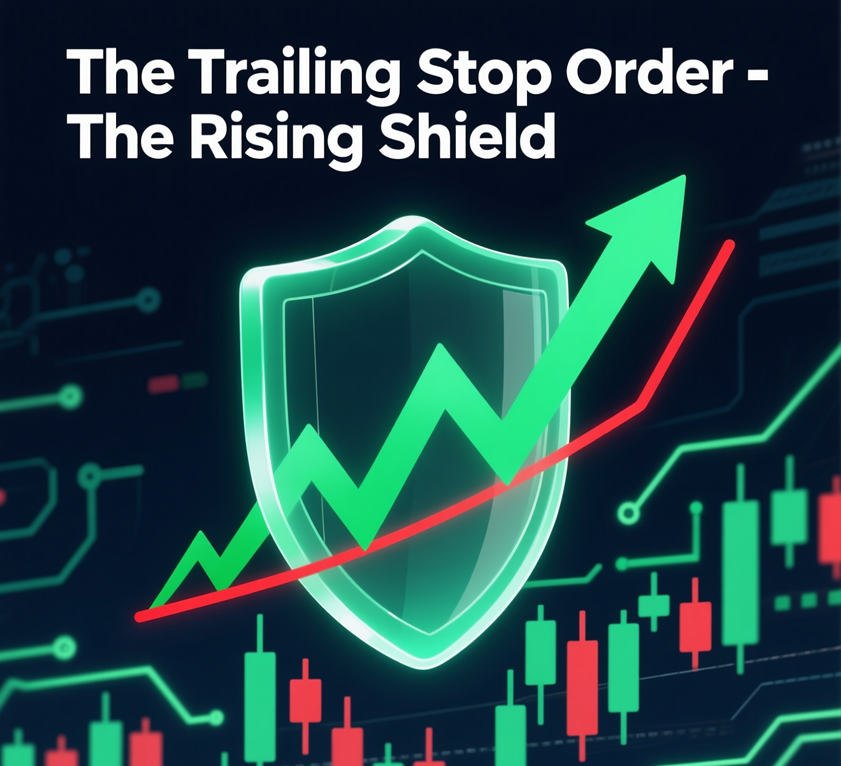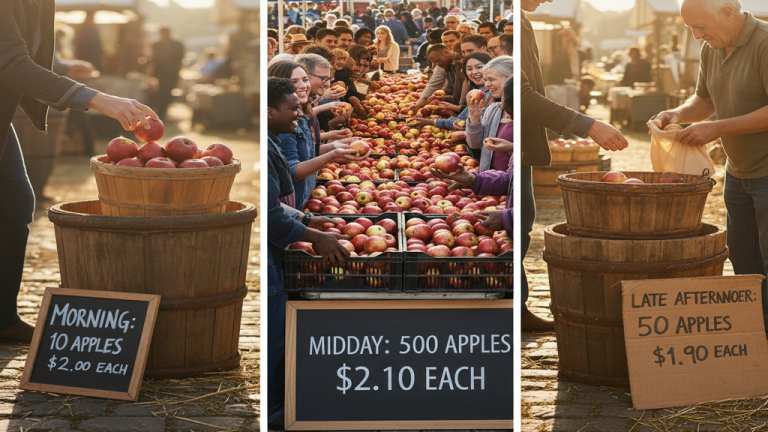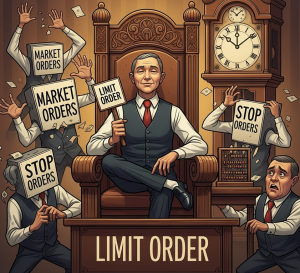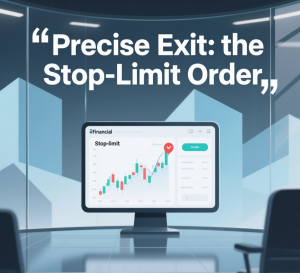The Rising Shield: Mastering the Trailing Stop Order
Summary TLDR
A trailing stop order is an advanced stop-loss order that automatically adjusts upward as a stock’s price rises. It is designed to let a trader protect their profits by locking in gains while still giving a winning trade room to grow.
Introduction
A standard stop-loss is a shield that protects your initial capital from a devastating blow. But what if a trade is successful? What if your position shows a handsome profit? The static shield, placed far below, does nothing to protect these new gains. For this, a trader requires a more intelligent, dynamic tool: the trailing stop order. It is a rising shield that follows your success, allowing you to let your winners run while systematically securing the profits you’ve already made.
The Core Concept (Explained Simply)
Imagine you are climbing a mountain. You have a special safety rope attached to an anchor below you.
- A regular stop-loss is like leaving your anchor fixed at the bottom of the mountain. It will save you from falling all the way to the ground, but it won’t stop you from losing all the upward progress you’ve made.
- A trailing stop order is like having a climbing partner who moves your safety anchor up for you as you ascend. You climb 20 feet, and your partner moves the anchor up 20 feet. You climb another 20, and the anchor moves again. The anchor only ever moves up. It never moves down. At any point, if you slip, you will only fall the short distance to your last anchor point, preserving the vast majority of your climb.
This is precisely how a trailing stop works. It acts as a ratchet for your profits, locking them in at new levels as the price moves in your favor.
From Theory to Practice
A trailing stop is set not at a specific price, but at a specific distance from the current market price. This distance, or “trail,” can be set as a dollar amount (e.g., $5) or a percentage (e.g., 10%).
Here is how it functions:
- Initial Placement: You buy a stock at $100 and set a 10% trailing stop. Your initial stop-loss is placed at $90.
- The “Trailing” Action: The stock price rises to a new high of $110. Your stop price automatically adjusts upward to maintain the 10% distance. The new stop price is now $99 ($110 – 10% of $110).
- The “Locking” Action: The stock price continues to a peak of $120. Your stop price follows it up to $108 ($120 – 10%). Now, the stock price begins to fall. Your stop price freezes at its highest point: $108. It will not move down with the price.
- The “Stop” Action: If the stock price continues to fall and touches $108, the order is triggered. It becomes a market order to sell at the next available price, locking in an approximate $8 per share profit.
A Brief Illustration
An investor buys a volatile growth stock at $50, believing it has the potential for a major run. To manage the risk while capturing potential upside, they place a 20% trailing stop order.
- Initial Stop: The stop is placed at $40 ($50 – 20%).
- Stock Rises: The stock goes on a tear, reaching a peak price of $80. The trailing stop has automatically moved up and is now resting at $64 ($80 – 20% of $80). The investor has now locked in a guaranteed profit of at least $14 per share.
- Stock Corrects: The stock then pulls back from its high. The stop price remains frozen at $64. When the stock price falls and trades at $64, the order is triggered, and the position is sold.
Without the trailing stop, the investor would have had to guess where to sell, likely giving back much more of their profit. The trailing stop automated the exit strategy.
Why It Matters
- Automates Profit-Taking: It provides a logical, unemotional method for exiting a winning trade, solving the difficult problem of “when to sell?”.
- Lets Winners Run: It prevents a trader from cutting a profit too early. As long as the stock is in a healthy uptrend, the trailing stop will not be triggered.
- Dynamic Risk Management: It evolves with the trade. In the beginning, it protects your initial capital. As the trade becomes profitable, it transforms into a tool that protects your gains.
Additional Topics to Explore
- Stop-Loss Orders: Understanding the basic, static version is essential before using a trailing stop.
- Stop-Limit Order: A variation that combines a stop price with a limit price to give the trader control over the execution price, though it does not guarantee the order will be filled.
- Limit Orders: The order type that a stop-limit becomes once it is triggered.






















